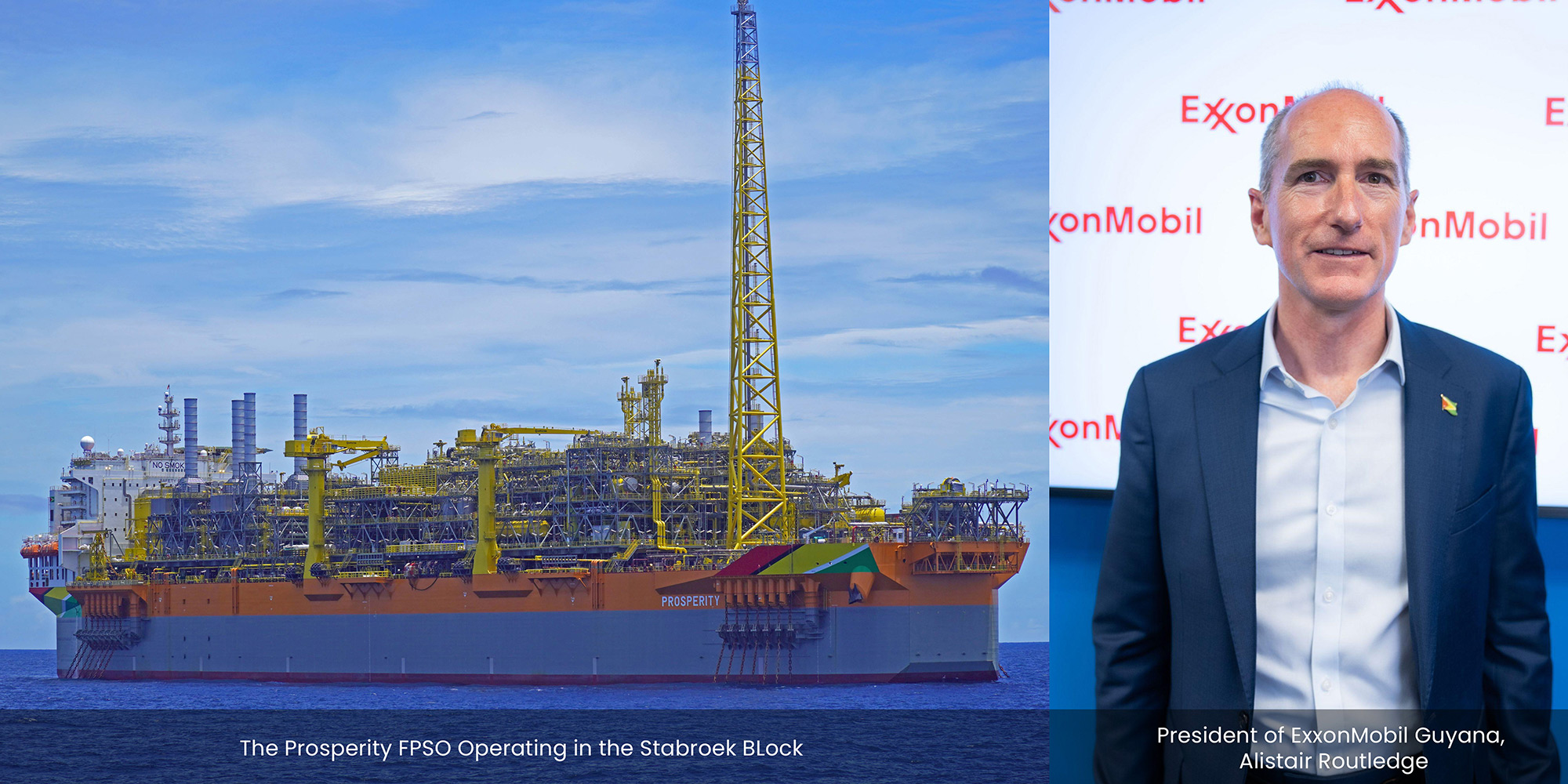
ExxonMobil, alongside its partners Hess and CNOOC, has often credited technological advancements as one of the key factors that allowed for rapid success in Guyana’s Stabroek block. In just five years, the Exxon-led consortium commenced oil production in December 2019 at the Liza Phase One project.
This performance was deemed unprecedented as it surpassed the industry standard by two years. A lesser-known fact, however, is that the technology to develop Guyana’s sweet, light hydrocarbons did not exist 15 to 20 years ago, as highlighted by the President of ExxonMobil Guyana, Alistair Routledge.
On the sidelines of the Offshore Technology Conference (OTC) on May 8, 2024, Routledge explained to the Guyana Energy Conference & Supply Chain Expo the crucial role of technological breakthroughs.
Routledge said technological advancements played a key role in revolutionizing how deep water projects are optimized in Guyana to meet global energy demand.
“…But let’s face it, 15 to 20 years ago, the technology did not exist to develop the resource in the water depths offshore Guyana. So, everything has its time and place,” said the ExxonMobil official.
To date, the oil major has utilized cutting-edge technology to drill wells as deep as 15,000 to 18,000 feet. For example, ExxonMobil’s 13th discovery in Guyana at the Yellowtail – 1 well was drilled to a depth of 18,445 feet (5,622 meters) in 6,046 feet (1,843 meters) of water.
Routledge further noted that technology has allowed it to hit a successful queue of discoveries in Guyana’s Stabroek Block, now well over 35. With six sanctioned projects, ExxonMobil estimates that Guyana will be producing over 1.3 million barrels of oil by 2027.
Next year Guyana will commission the Yellowtail project, the fourth development in the Stabroek block. Working alongside three existing vessels–the Liza Destiny, Liza Unity, and Prosperity FPSOs; production will reach approximately 870,000 barrels of oil per day. This would make Guyana the world’s largest oil producer per capita.
“…All these technologies have come together to enable us to find, deliver and develop the resources in Guyana that we see today. It is quite a remarkable success,” Routledge said.
The ExxonMobil Guyana President also emphasised the importance of events like OTC in providing a one-stop showcase of the latest developments for the industry which can then be applied to Guyana’s operations.
“What a conference like OTC does is that it provides a platform for the sharing of technology and expertise, whether that is the companies bringing and inventing new technologies…or it is the exchange of ideas and new developments by geoscientists, engineers and the technology people in our industry who are able to hear from one another, what we are thinking and how do we apply that in Guyana in order for us to develop and find additional resources, bring down the cost of development, and extend the recovery of resources for maximum value for the country,” Routledge said.
Overall, the ExxonMobil official said cutting-edge technology is already unlocking Guyana’s hydrocarbon potential and that it will remain integral for the long term.
